What Is A Hardtail Mountain Bike?
Simply put, a hardtail mountain bike is a mountain bike that only has suspension on the front. This is located on the fork. Don’t think that a hardtail is inferior to a full suspension bike, as they have some advantages over full suspension mountain bikes and are often used when a full suspension bike would make life more difficult or when it would be overkill.
What Is So Good About Riding A Hardtail Mountain Bike?
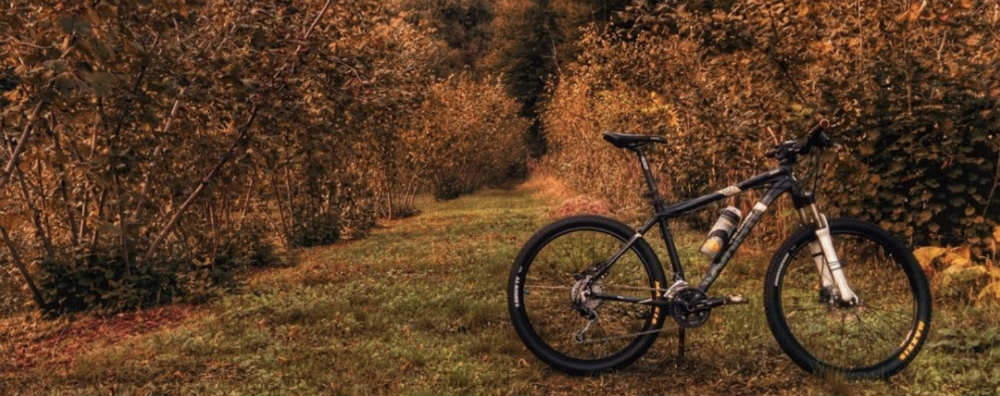
Less Expensive
Hardtail mountain bikes are much simpler than full suspension bikes, therefore they are not as expensive to buy and run. In many cases, they have similar or better components than full suspension mountain bikes. In fact, a good hardtail is better than a bad full suspension bike.
Easy To Look After
Due to the simple design of a hardtail, they are considerably easier to look after. This is because there are less moving parts to go wrong. Moving parts are susceptible to the water and mud acts like a grinding paste, wearing the parts out quickly. It is common for full suspension bike riders to out their full susser to bed for the winter in favour for a hardtail.
Light Weight
The lack of rear suspension and all the pivots, linkages and hinges associated with a full suspension bike, makes a hardtail mountain bike much lighter. This means that it is so much easier when climbing hills. High end hardtail mountain bikes often have carbon frames to reduce the weight even further. You are more likely to find a carbon frame on a cross country mountain bike.
Ride Characteristics
A hardtail mountain bike can feel more responsive than a full suspension bike, especially when pedalling. This is because that the back end doesn’t bob up and down with each pedal stroke. This means that hardtails are very efficient and fast accelerating. You don’t get as much traction as you would with a full susser, but you can potentially have more fun. This is because the sensation is more raw, thanks to the light weight and pedalling efficiency.
Types Of Hardtail Mountain Bike?
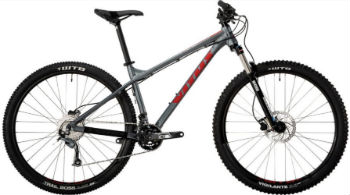
There are a few different types of hardtail mountain bike that you should be aware of. By knowing the difference between them you will be able to find the best bike for you.
Trail
Trail hardtail mountain bikes are the most common bikes, as are great all rounders. They have head tube angles, short stems and wider bars. This is so that the feel comfortable and instil confidence on all manner or terrain. They also have a wider gear range and suspension travel between 100-150mm. This amount of suspension travel means that they can cope with technical descents without compromising climbing ability. A trail hardtail mountain bike is the perfect choice if you don’t know what discipline of mountain biking you are going to get in to. They will take you anywhere and everywhere you want to go.
Cross Country (XC)
Cross country mountain biking is all about riding single-track, varied terrain for long distances. This means that a cross country bike needs to have light weight, a wide range of gears, narrow tyres, narrow handlebars, 75-100mm front suspension and a steep head tube angle. All of these characteristics make your riding position comfortable for long rides and to make riding as efficient as possible.
Fat Bikes
Fat bikes have very wide tyres with high volume. The main purpose of these bikes is to make it easy to ride on sand and snow. The larger tyres on a fat bike give the rider a lot more grip on loose terrain. The tyres are also very soft in order to soak up a lot of bumps. This means most of them don’t have rear suspension.
Who Should Ride A Hardtail Mountain Bike?
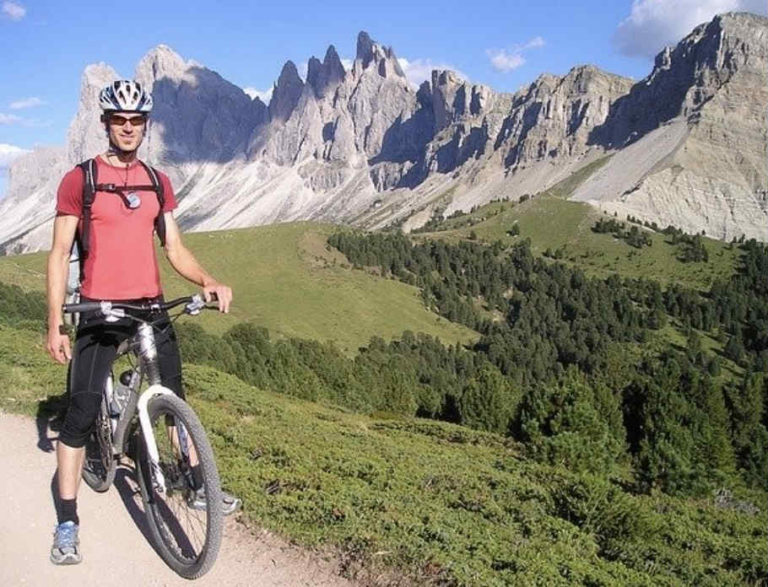
Hardtail mountain bikes are suitable for anyone that isn’t riding very technical terrain. By riding very technical terrain, I mean riding trails with big rocks, roots and jumps. This type of terrain requires more suspension travel. There are people out there that will say “it’s not about the bike, it’s about the rider, so you can can ride anything on a hardtail”. There is an element of truth to this, but when it gets rough you are going to have a much better time on a full suspension bike and be able to ride for longer.
If you are just getting in to the sport of mountain biking, a hardtail is the best option. This is because the lower cost of a hardtail will make it more accessible. Also, you don’t really know how often you are going to be riding when you are a beginner. There are lots of expensive fun suspension bikes gathering dust in people’s garages, because the owners have realised that they don’t have time to ride.
Hardtail mountain bikes are also great for learning the basic techniques of riding. If you can master these techniques on a hardtail, you will have no problem transferring your skills to a full suspension bike later.
For those of you that want a bike that can be used as an allrounder, a hardtail is ideal. You can use them for commuting and for trail riding.
More experienced mountain bikers take advantage of the efficiency and speed that you get from a hardtail for cross country riding.
What To Look For When Buying A Hardtail Mountain Bike
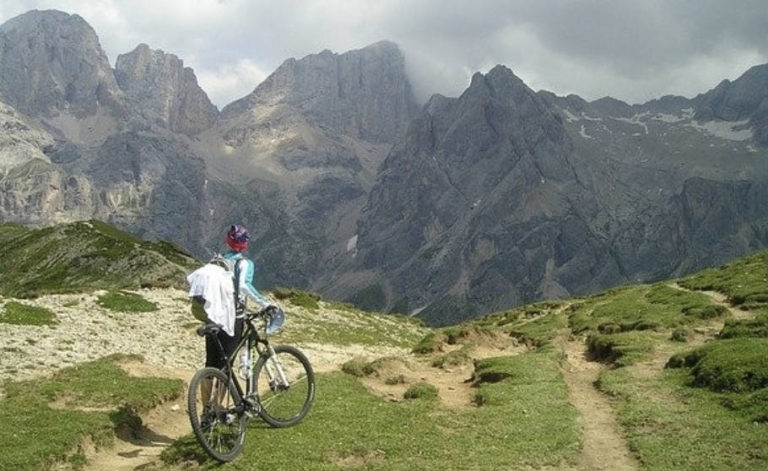
Lorem ipsum dolor sit amet, consectetur adipiscing elit. Ut elit tellus, luctus nec ullamcorper mattis, pulvinar dapibus leo.
Frame Materials
You will find that there are a few different materials mountain bike frames are made out from. The choice of material depends on what they are used for and the rider’s budget.
Aluminium – This is the most common mountain bike frame material. Aluminium is light, strong and offers great power transfer and stiffness. Higher end aluminium bike frames will use varying the thickness of tubes, reducing weight without compromising the strength of the frame.
Steel – Steel isn’t used much in mountain bike frames these days. This is because it is heavy when you compare it to aluminium and carbon.
Carbon: Carbon is quite rare in hardtail mountain bikes, apart from higher end bikes. Carbon fibre is light, strong and gives the best stiffness-weight ratios.
Components
Wheels
There are three wheel sizes available for adult mountain bikes, 26″, 27.5″ and 29″. Originally all mountain bike wheels were 26”, which makes it easy to change direction. However, the small size is not so good for rolling over obstacles or XC racing. 26″ wheels are being phased out, therefore it is difficult to buy good tyres for them. So, I would avoid a 26″ wheels bike these days.
The more modern wheel size is 29″. This size rolls over obstacles easier, giving you a faster straight line speed. The downside, is that they steering is not quite as precise and has a less playful feeling.
27.5 (650b) wheels is a great compromise between the 26″ and the 29ers. They give you precise steering with reasonable contact levels and rolling ability on the ground.
Tyres
Hardtail mountain bikes are more prone to punctures than a full-suspension bikes. This is because the rear tyres take up all the punishment from the rear. Tubeless tyres are brilliant and worth investing in, as they reduce the likelihood of punctures dramatically. innovation that uses sealant to prevent punctures. It’s very important that you have the correct tyre for the terrain that you tend to ride. Slicker tyres will give less rolling resistance, making it easier to pedal. These are ideal for smooth trails and dry weather, whereas tyres with more profile will be more suitable for rugged terrain and wet or slippy conditions.
Drivetrain
The drivetrain (also referred to as a groupset) is what transfers the effort you put in to the pedals to the back wheel. It is made up of the crank, chain ring, chain, cassette, derailleurs and shifters. A more expensive bike will have much lighter, efficient and durable drivetrain components. There are a number of component manufacturers, but Shimano and SRAM are the most popular.
Bikes with lower end drivetrain components tend to contain double or triple chainrings with lots of gears. These are not particularly efficient when changing gear. Cheaper drivetrains are commonly made from alloy and using cheaper components. These bikes are perfectly fine for recreational riding or commuting, but not suited to more technical rides.
Mid-range drivetrains often use the same technology found on higher end bikes but are made from heavier materials. This level of drivetrain is the most common and also uses in triple or double cranksets, but with more efficient shifting than lower end versions. The components are usually made from slightly higher end alloy or low-end carbon. These are fine for the majority of off-road rides.
High end bikes have drivetrain components made from carbon or titanium components. They can also use advanced technologies such as Synchro shift for smoother and more efficient gear changing. High end drivetrains also use a derailleur clutch to stop the chain from slipping. These allow you ride to the highest levels of your performance.
Many bike manufacturers are moving to putting a single front chain ring on their bikes. This allows them to shorten the chain stays and to use a simpler design.
Brakes
Some very low end hardtail mountain bikes still use rim brakes. These are the old style brakes that press pads on to the wheel to slow it down. If have even the slightest desire to ride a mountain bike off road going, you need avoid these and go for a bike with disc brakes. Disc brakes give you great stopping power. They are essential for good control and staying as safe as possible.
There are two types of disc brake:
- Mechanical: – these are cheaper of the two options. Mechanical disc brakes are resistant to water and require far less maintenance than rim brakes. These brakes will be found on most entry level hardtail bikes over the £400 price point.
- Hydraulic: – Hydraulic brakes are light and strong whilst being incredibly reliable. They also provide far better modulation than rim brakes which gives you much more control.
What Is A Hardtail Mountain Bike? - Answered!
With all this information you will be able to choose the best hardtail mountain bike for you. Here is my pick of the best hardtail mountain bikes 2020 has to offer. There is something to suit all budgets and abilities.



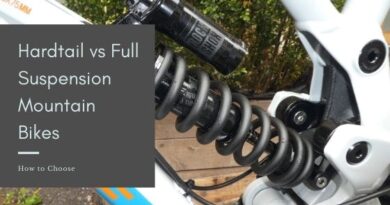

Pingback: Best Hardtail Mountain Bikes 2020: Choose yours |
Pingback: What Is A Mountain Bike? - Learn the details before buying